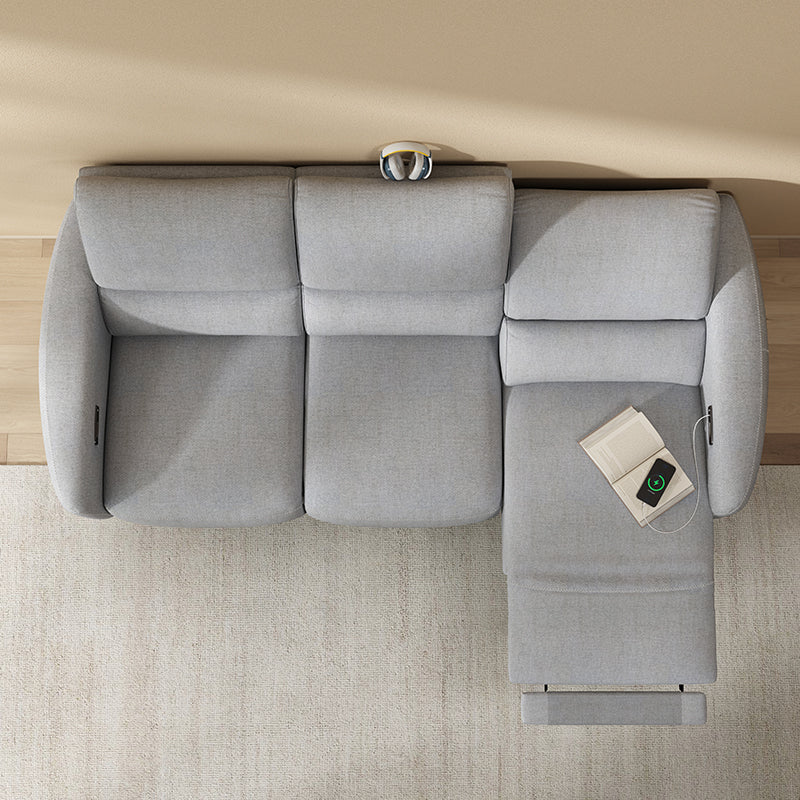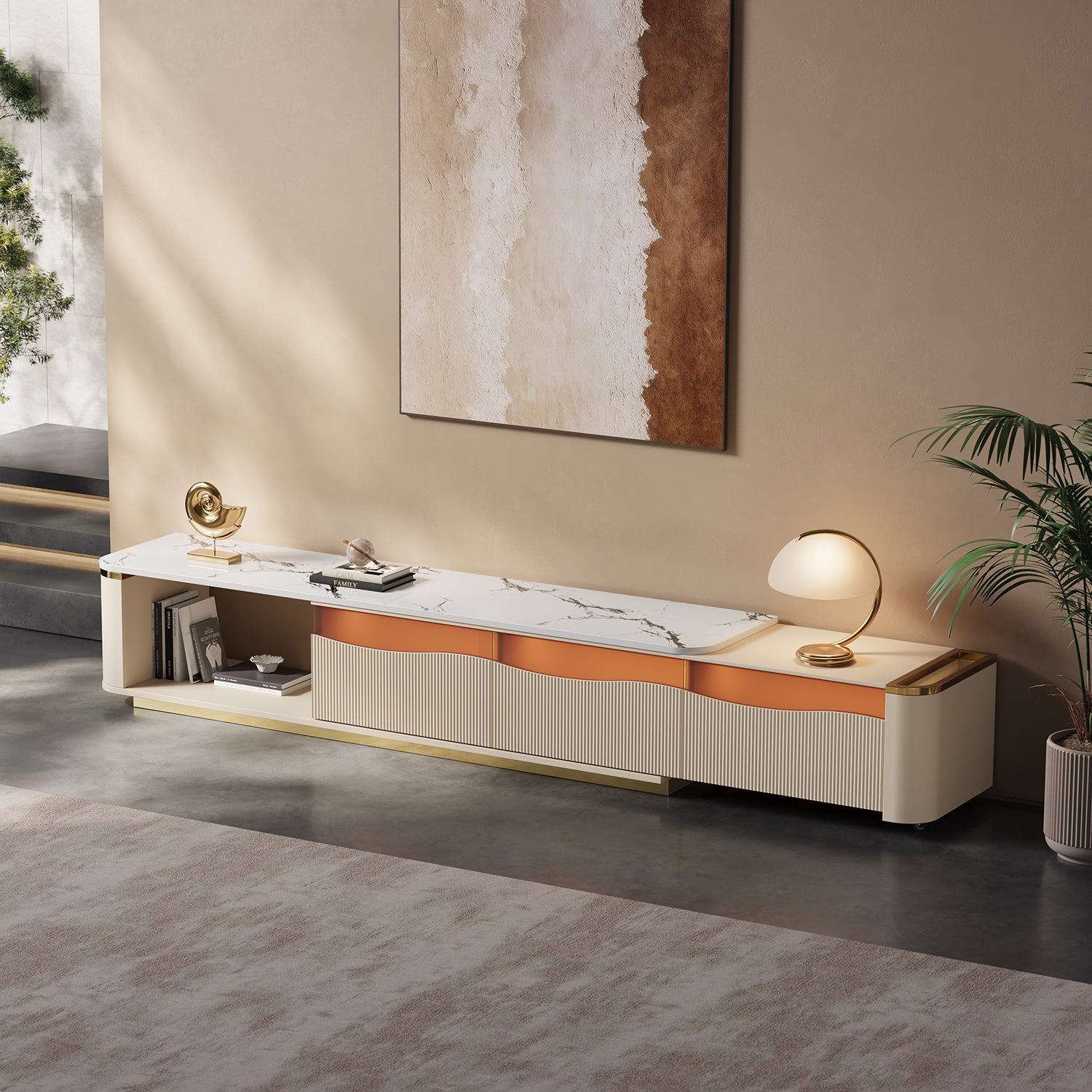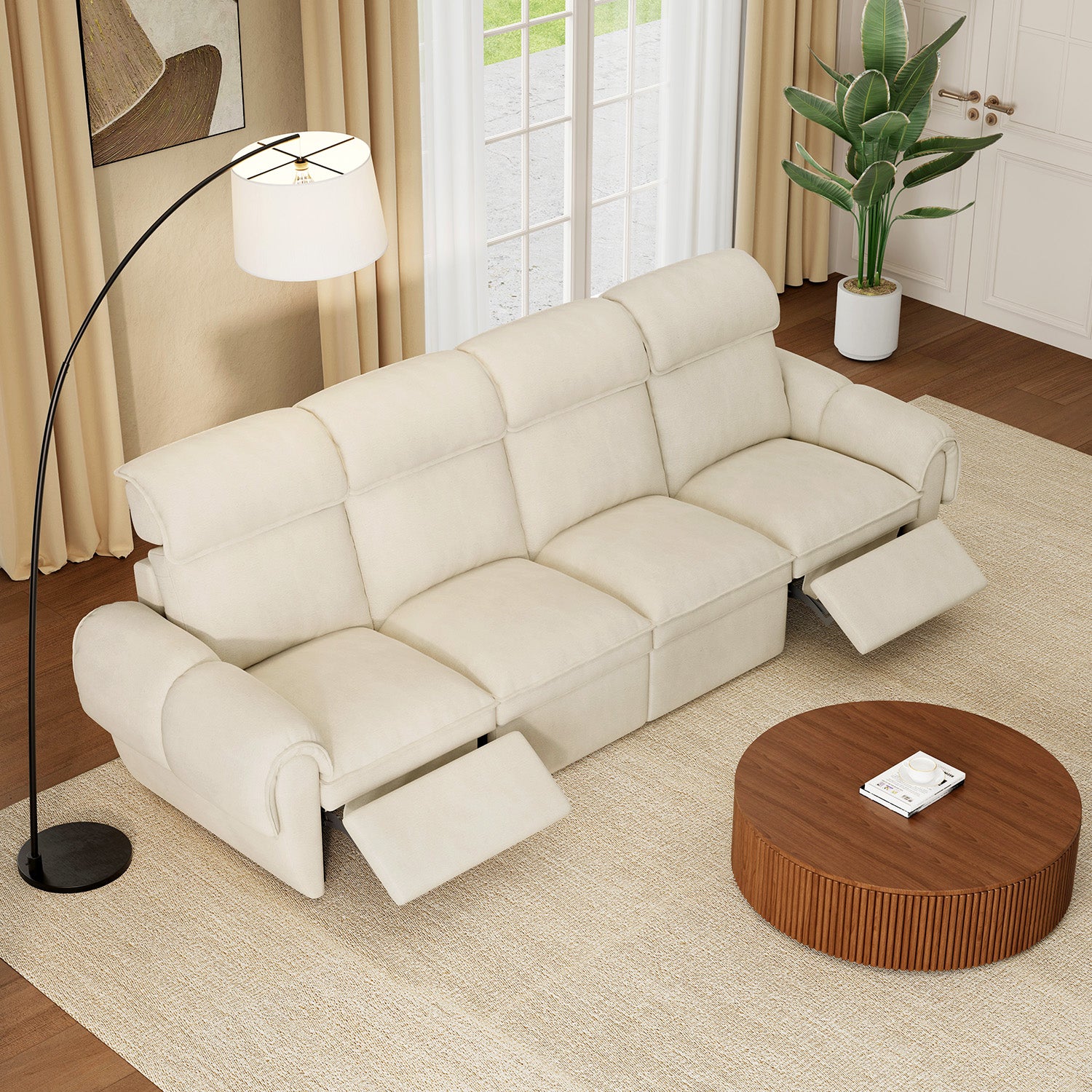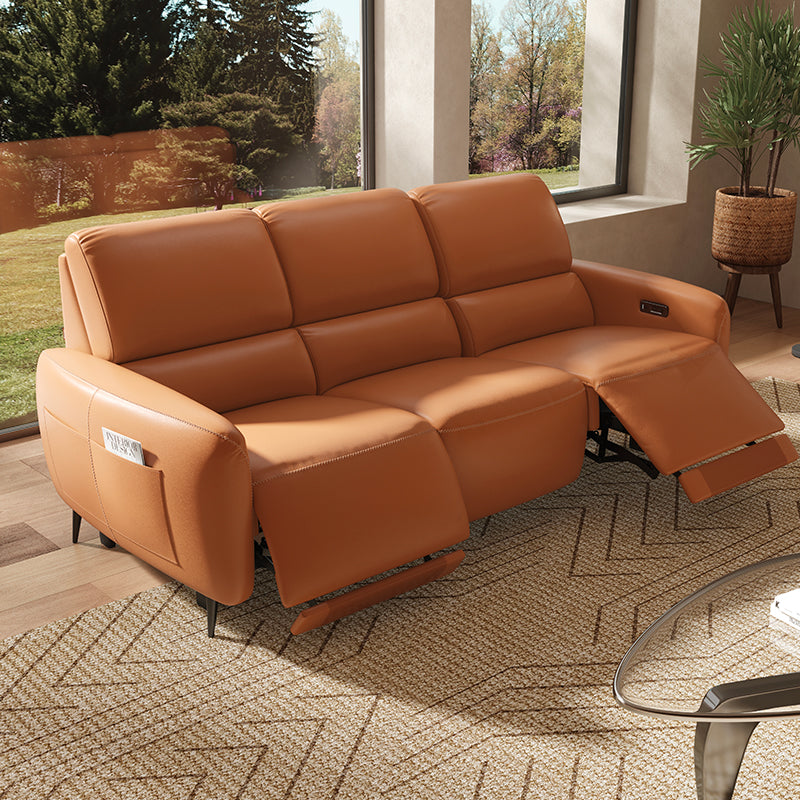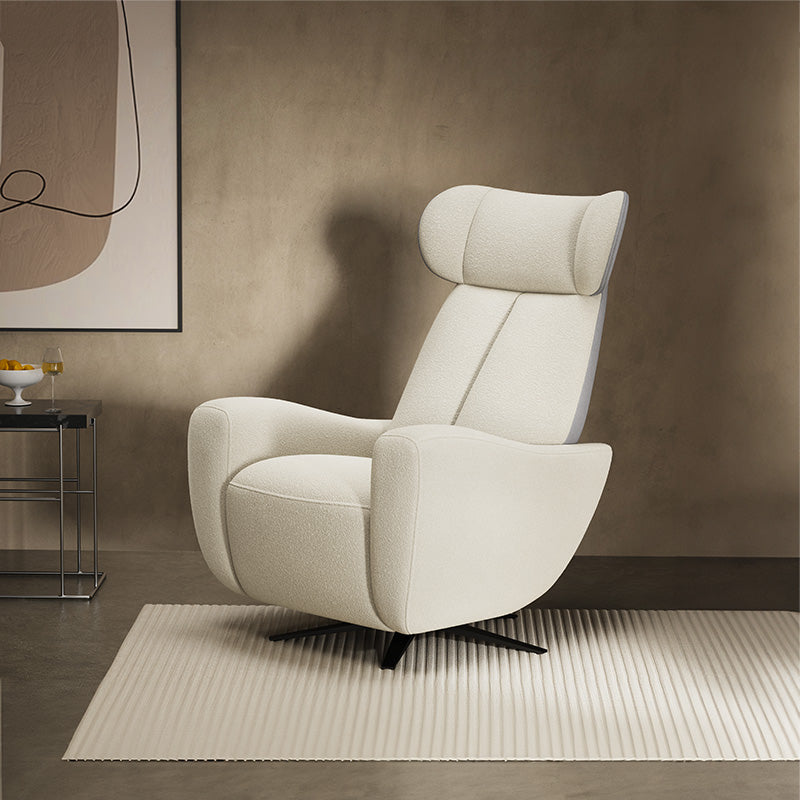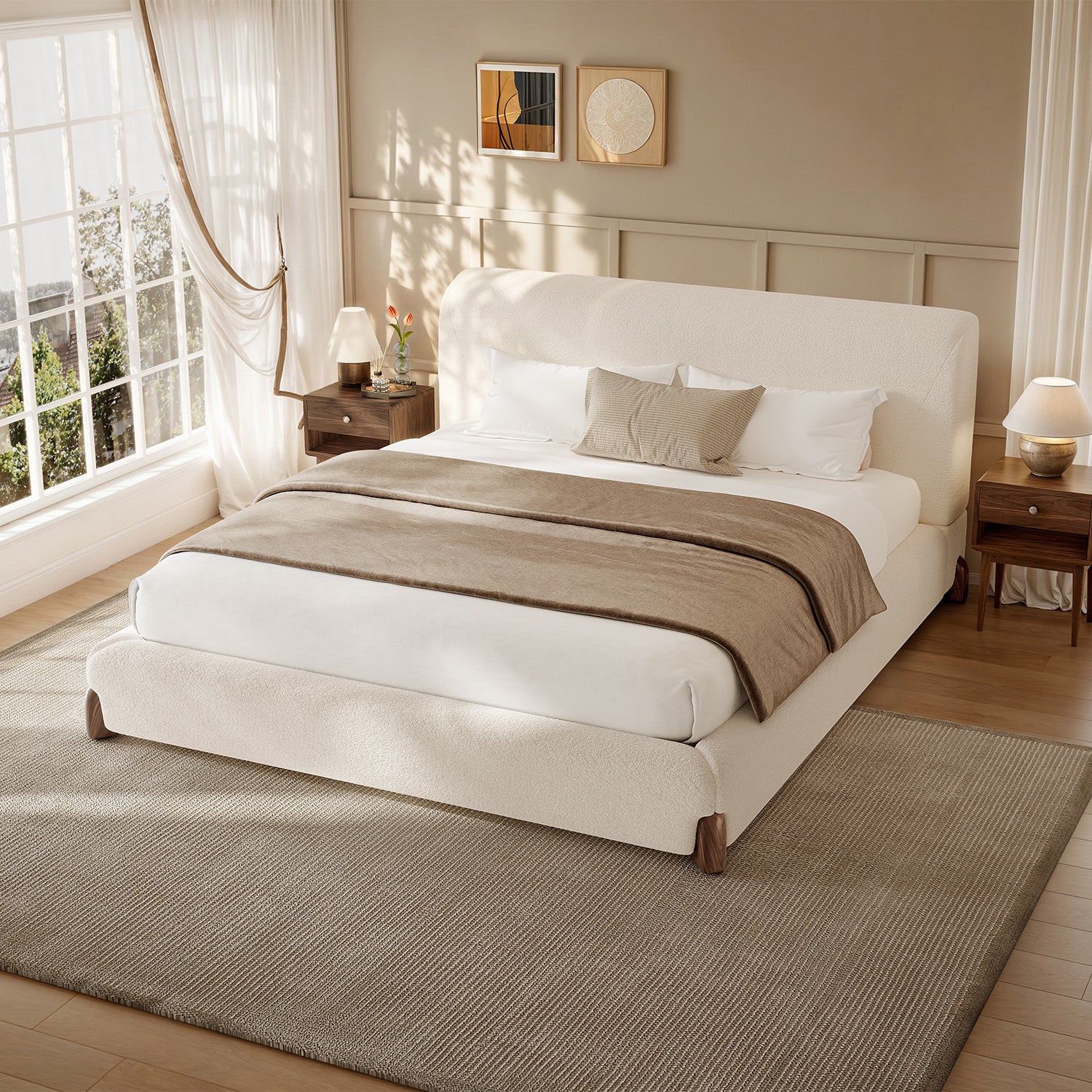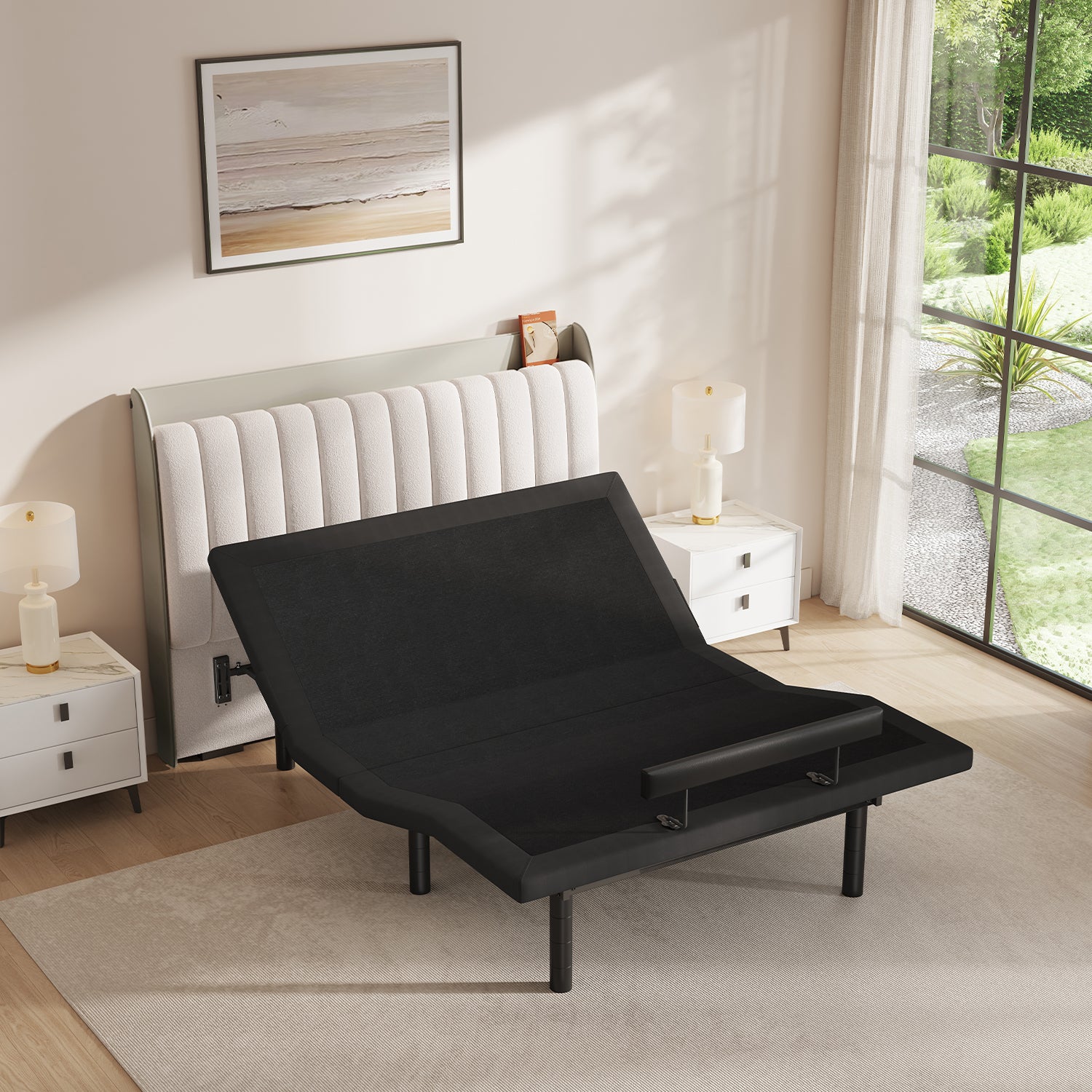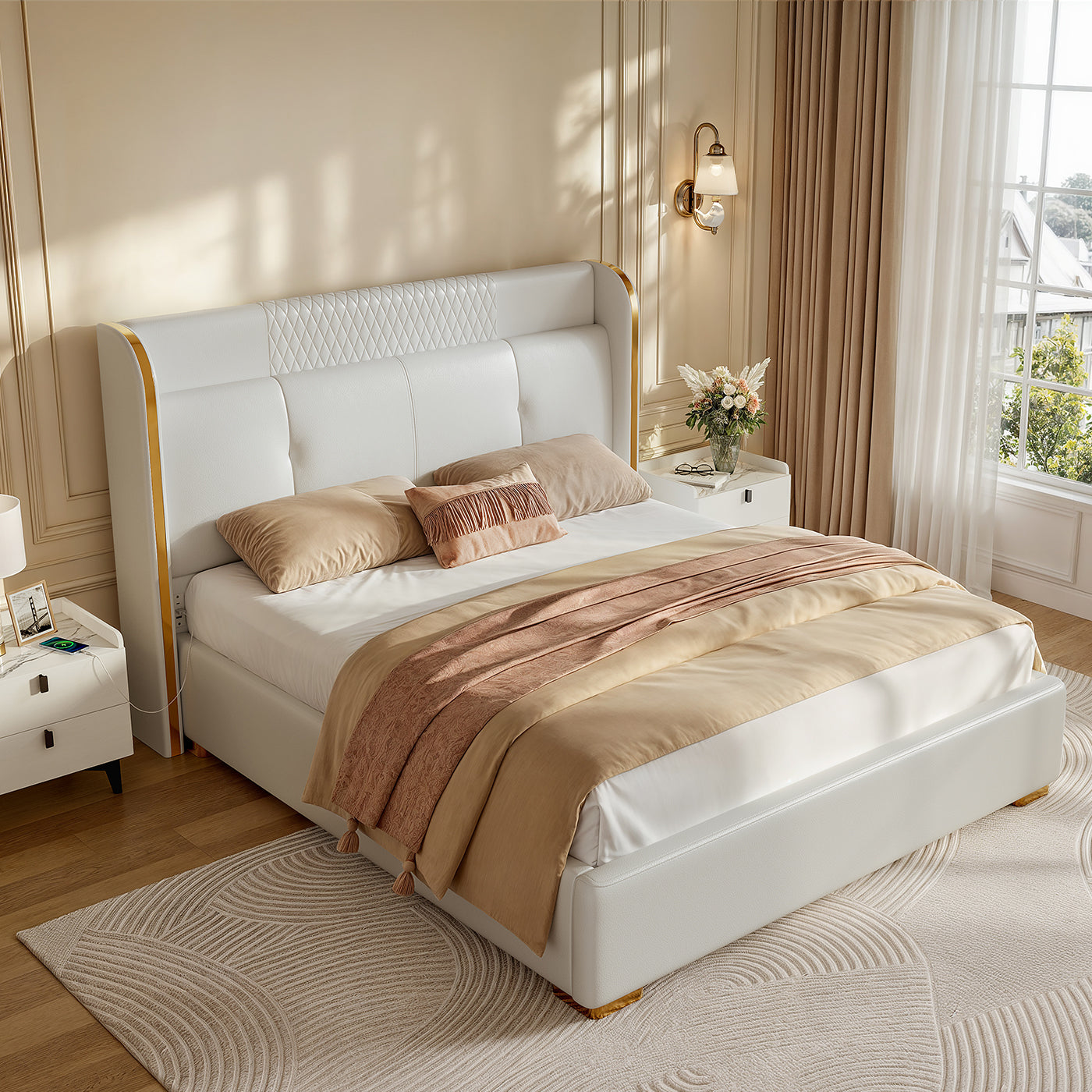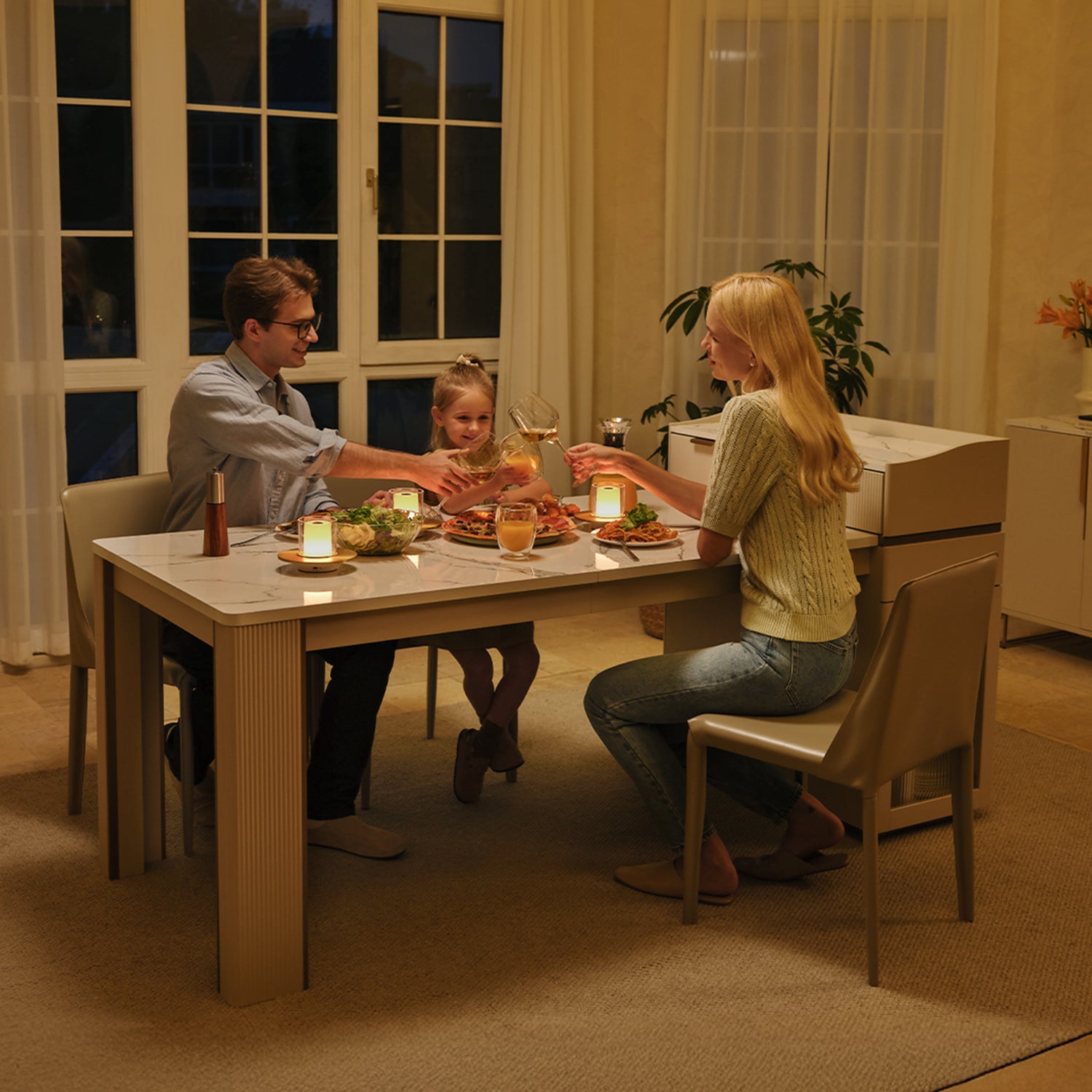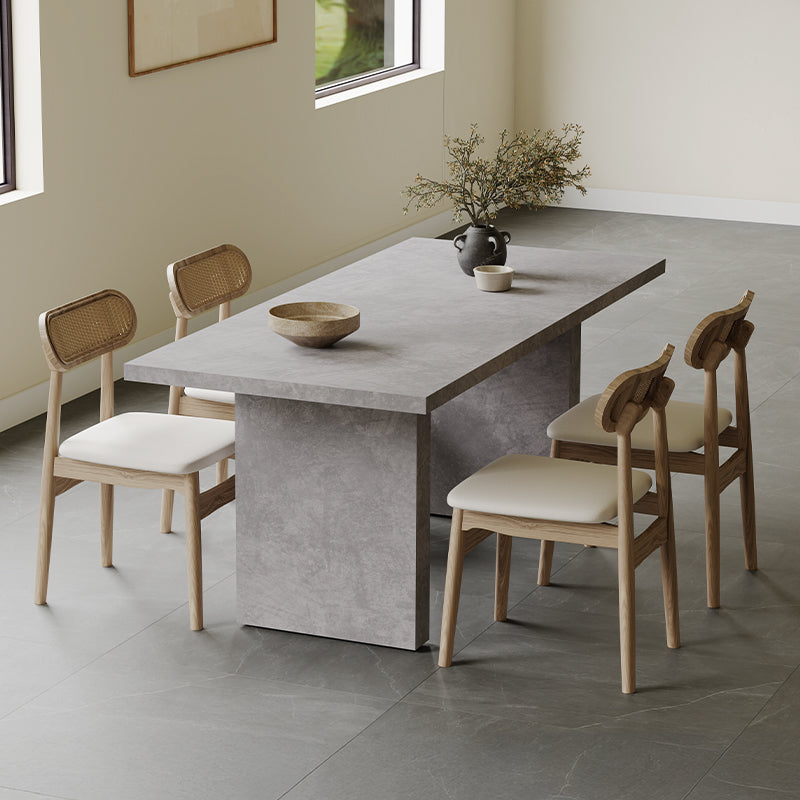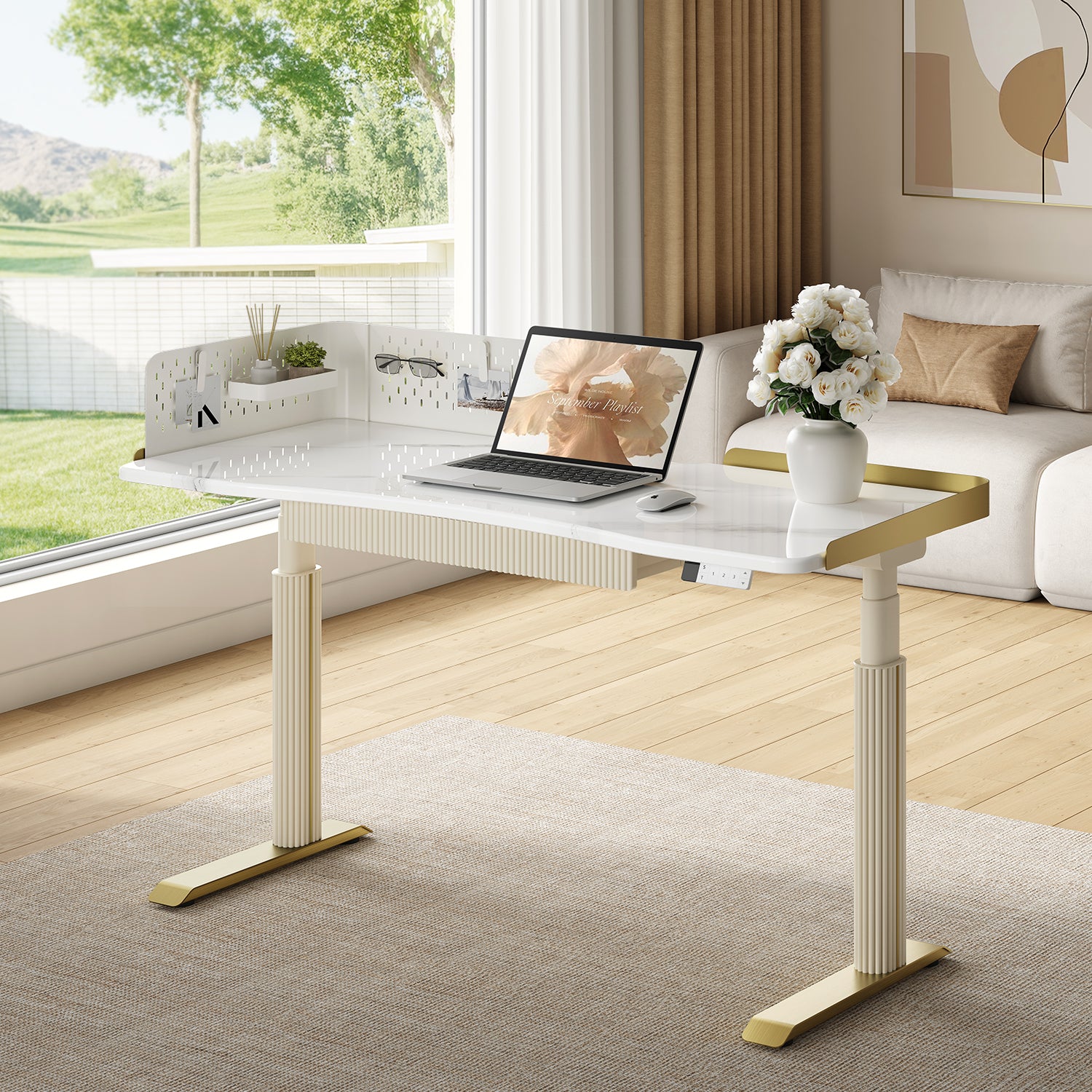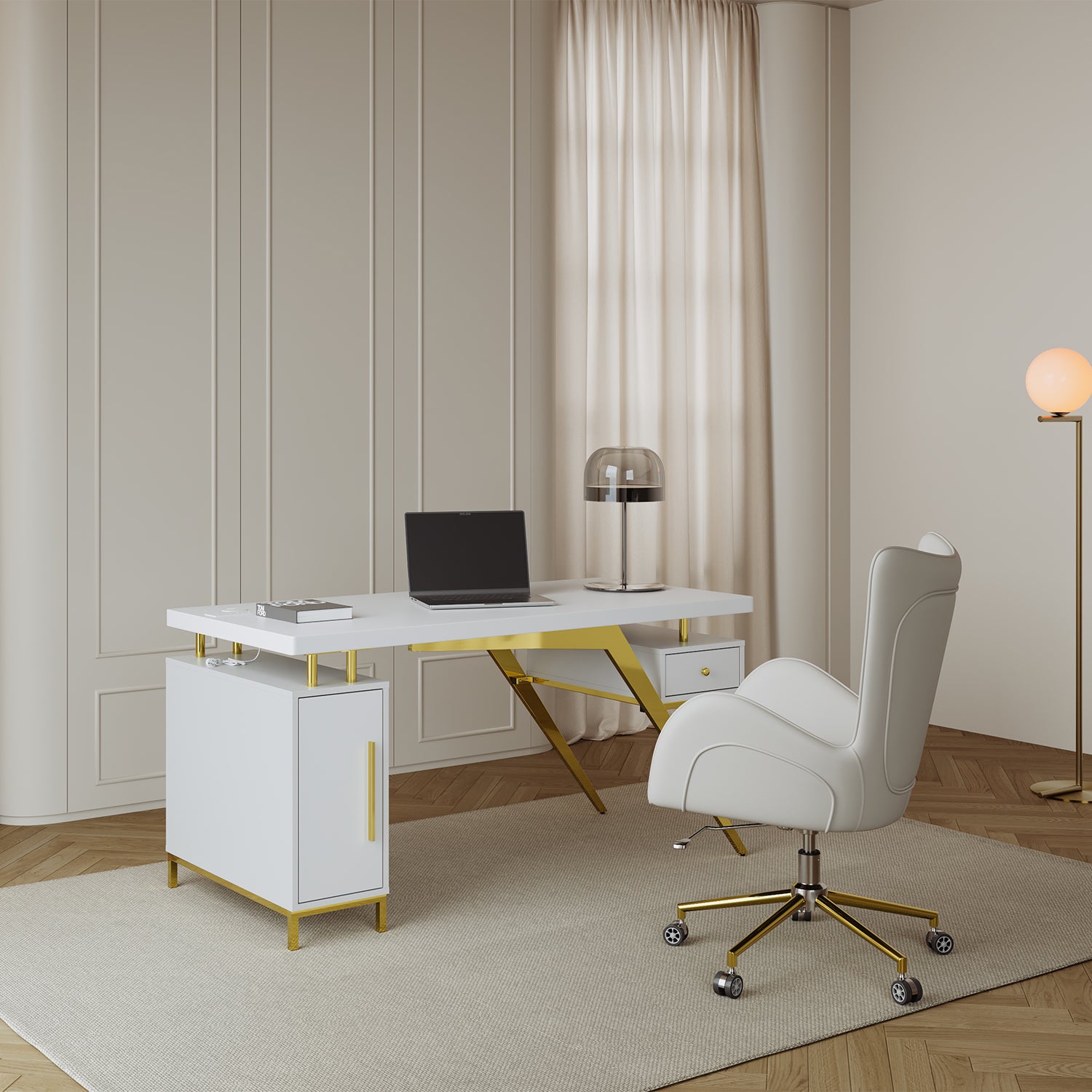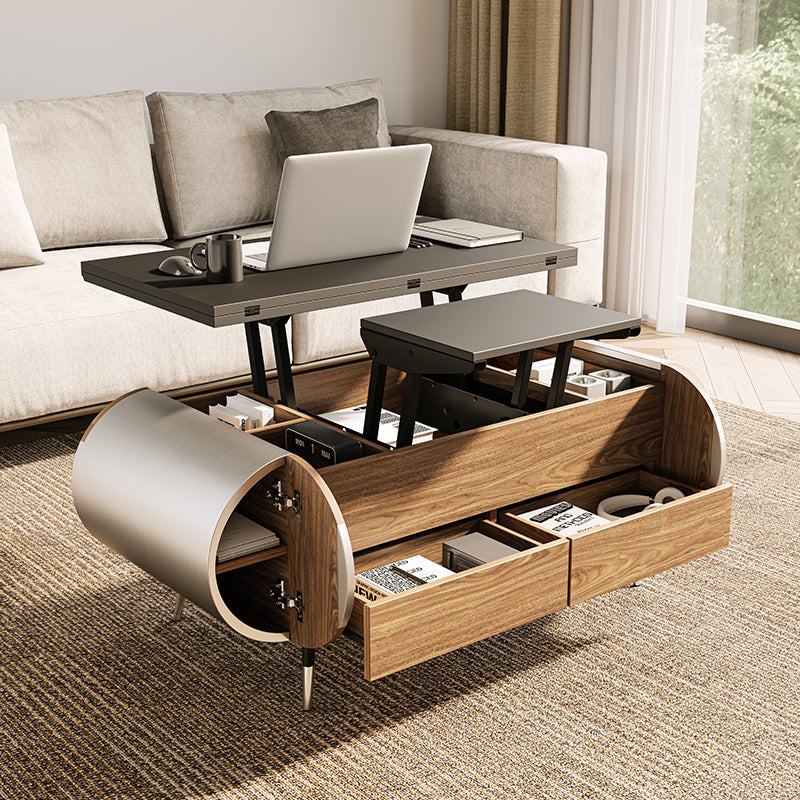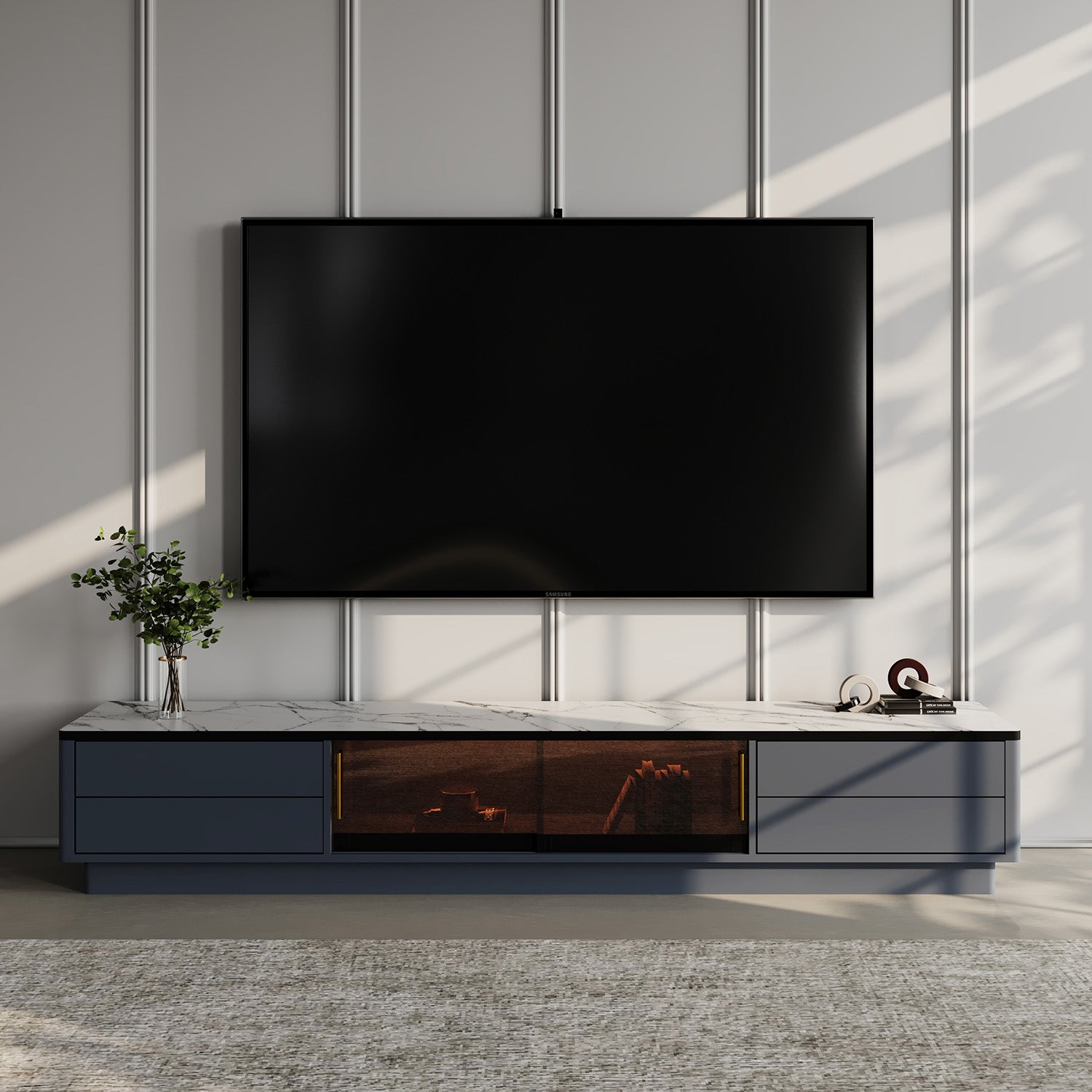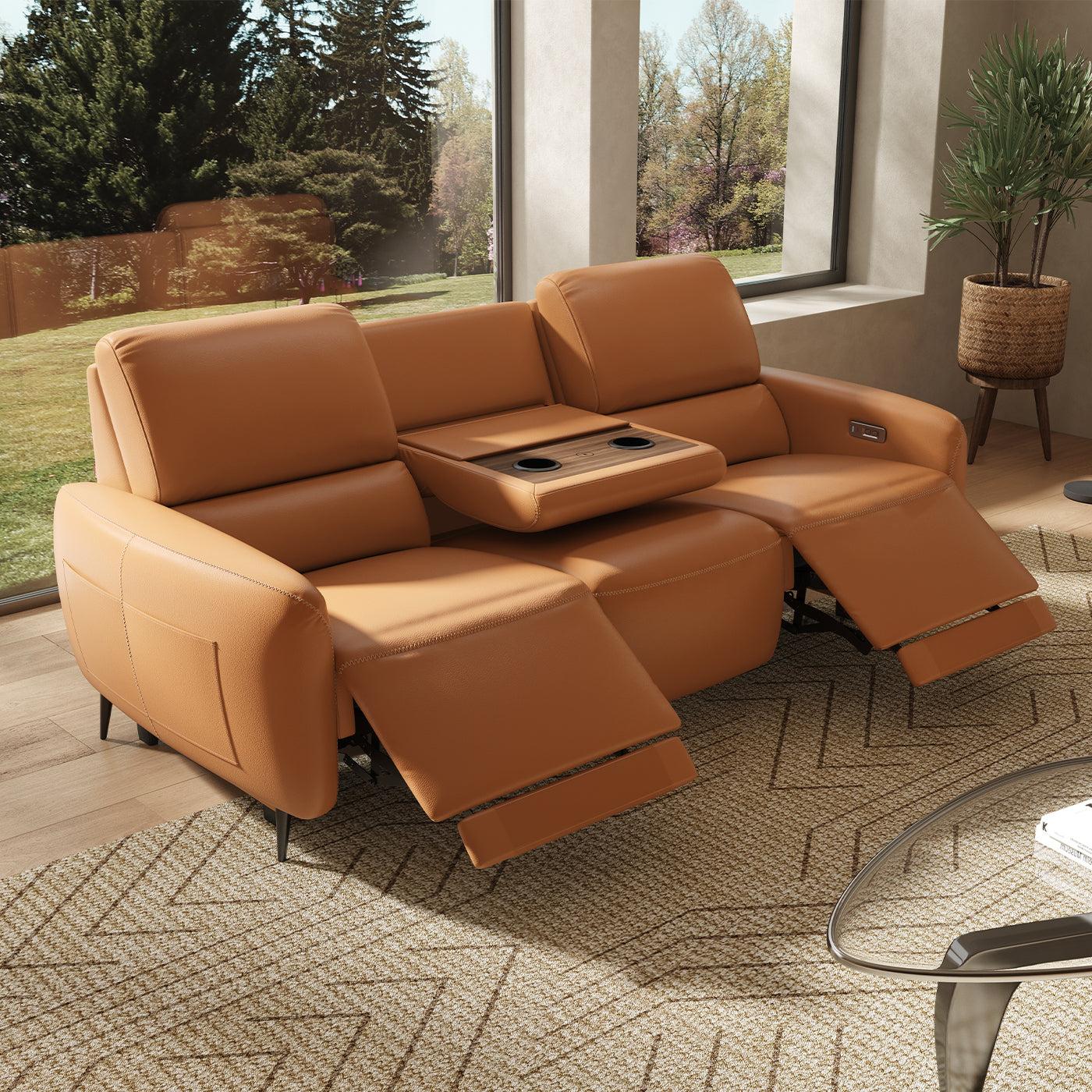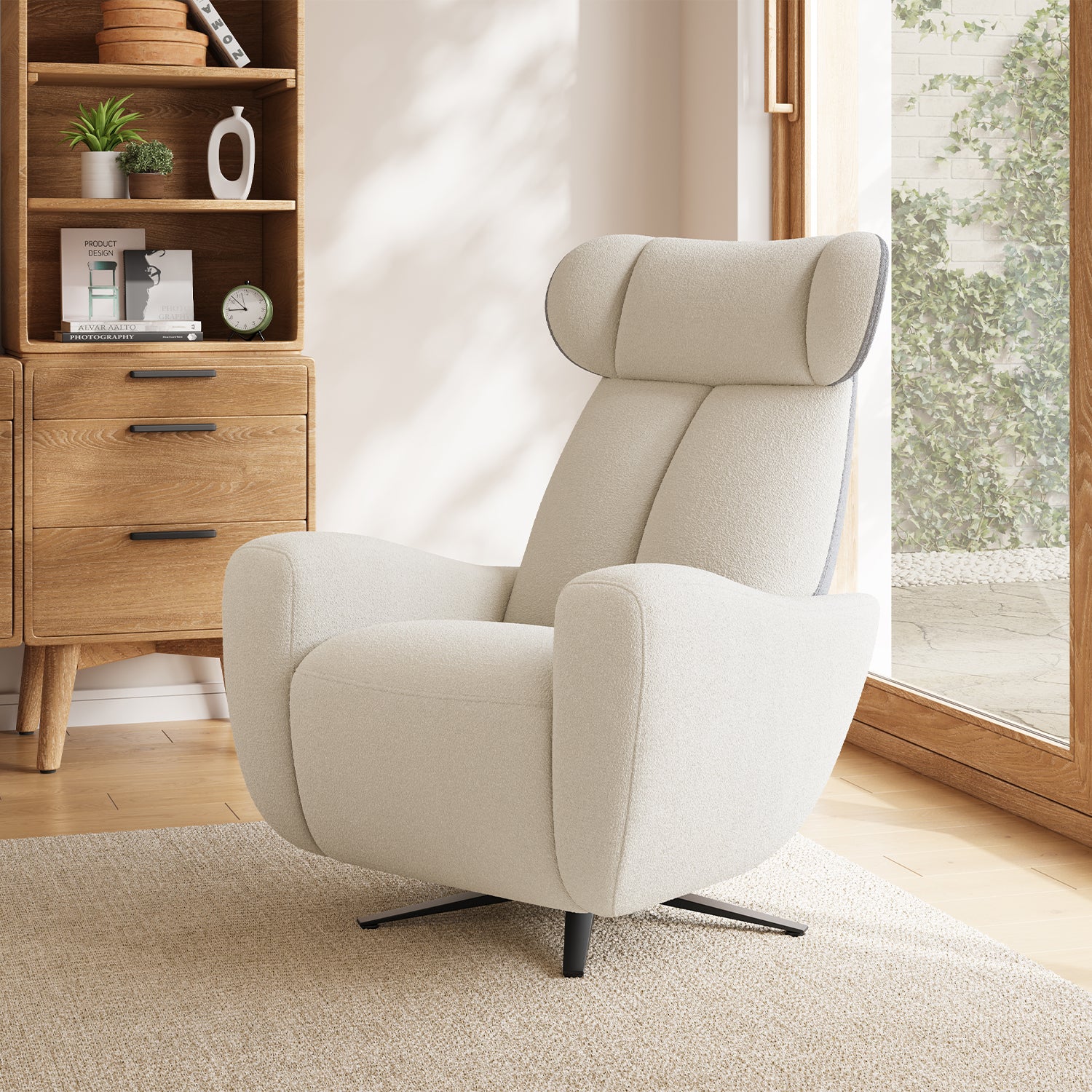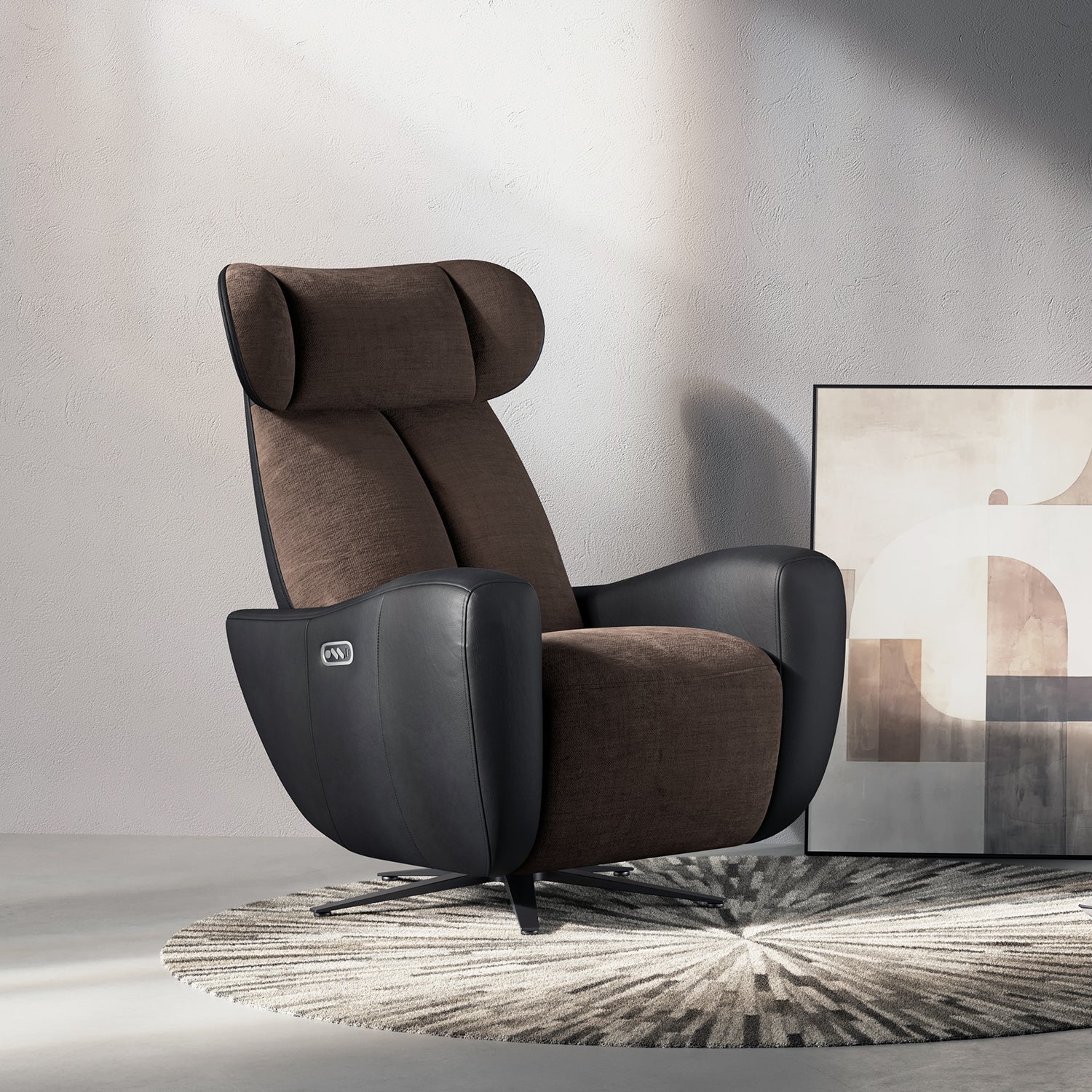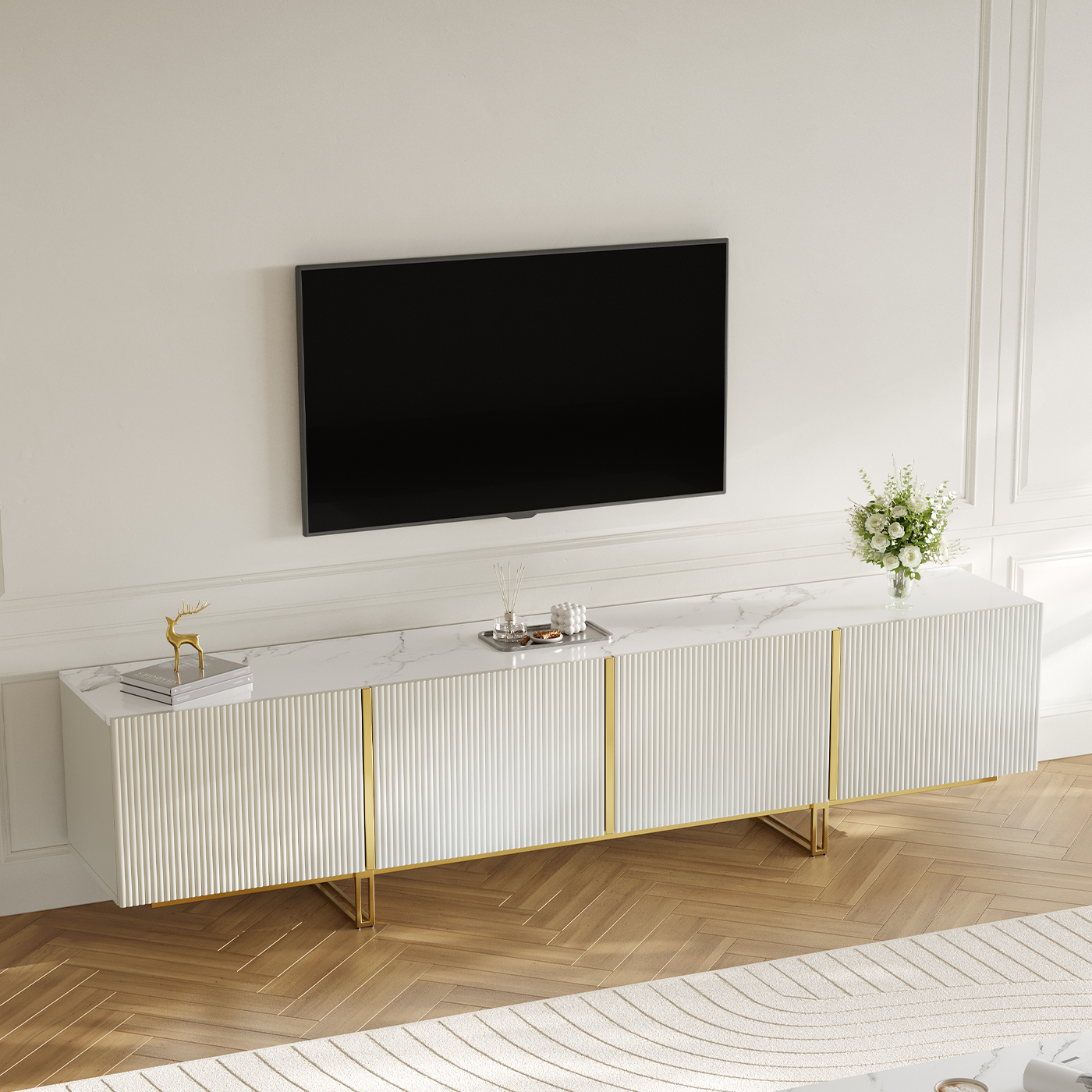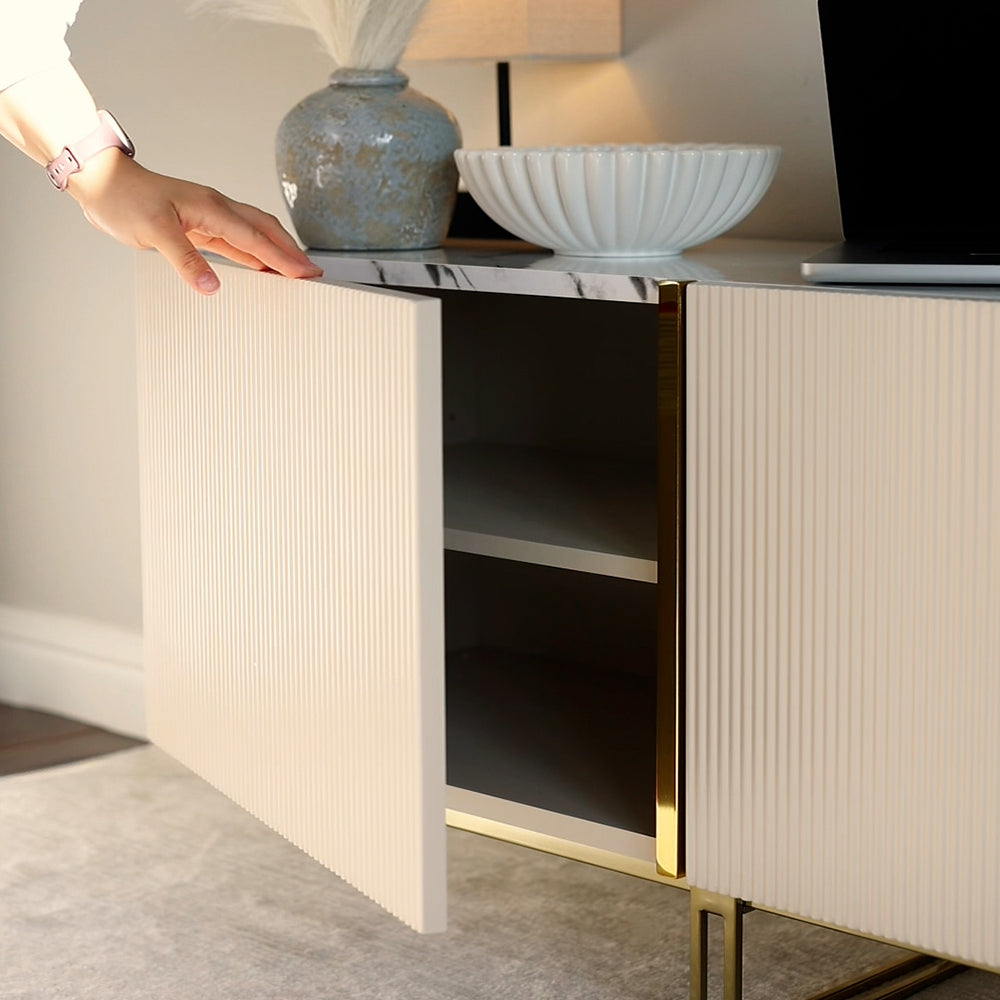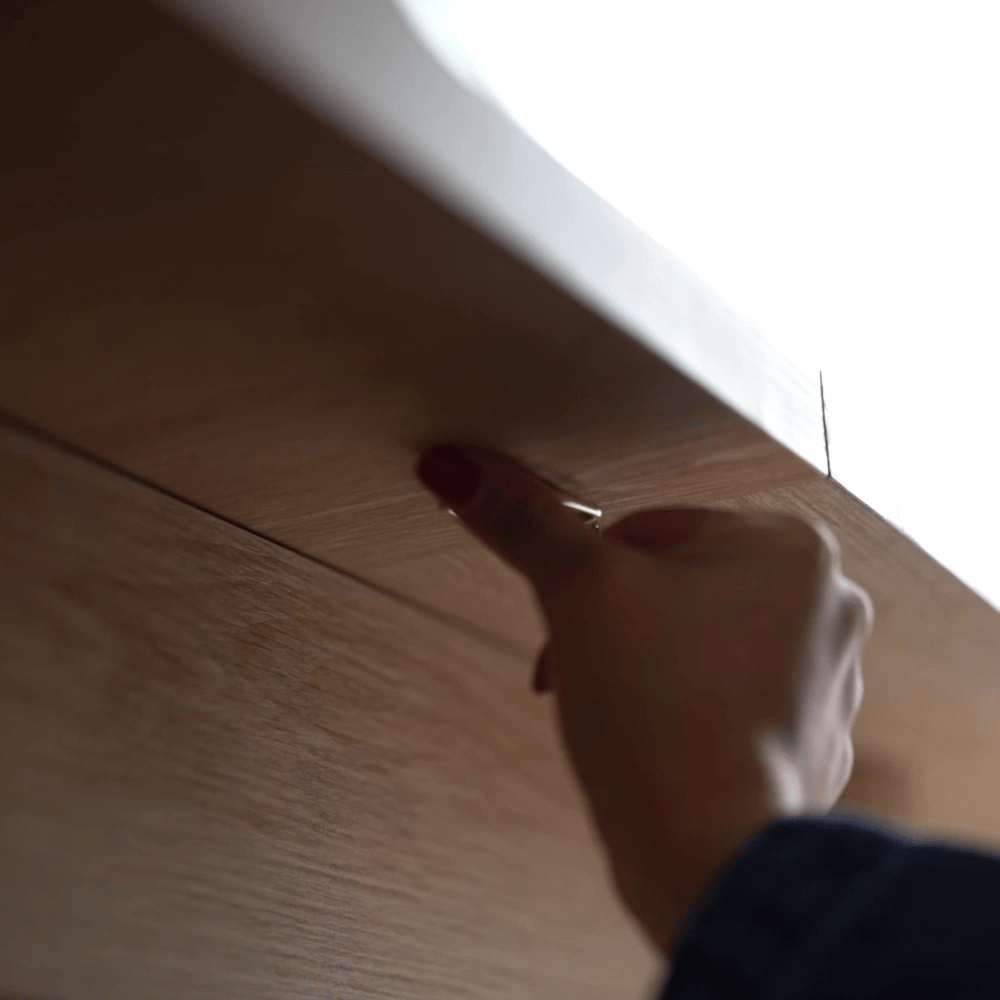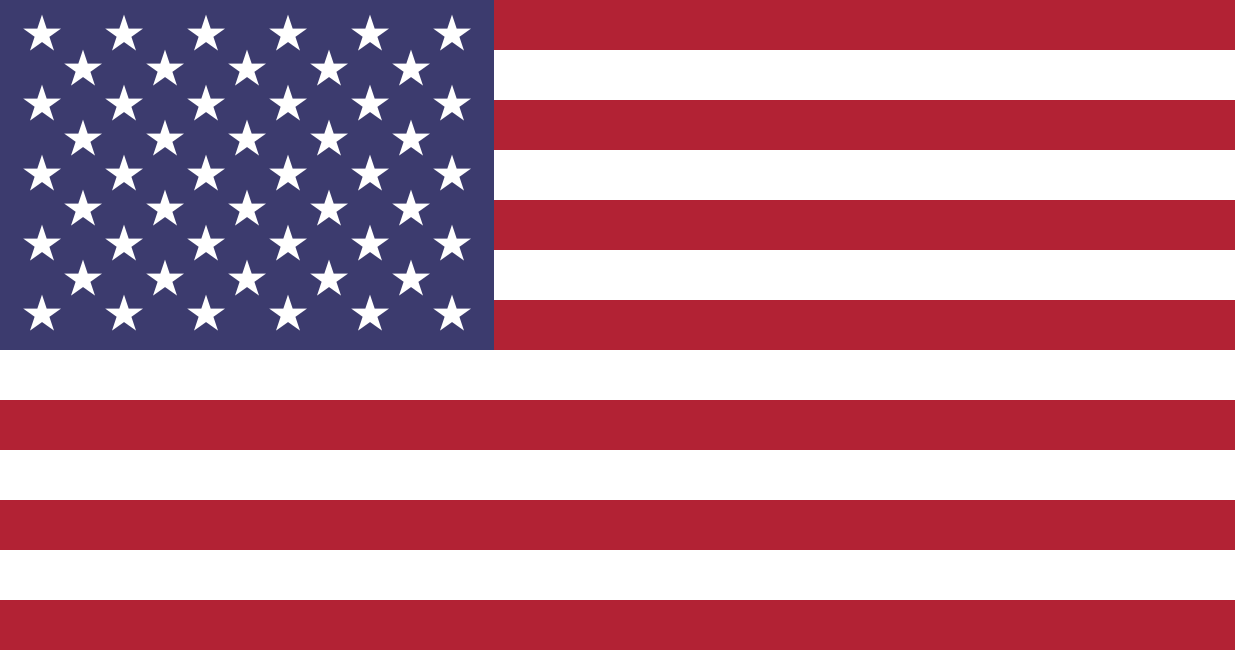Neck pain is one of those quiet things that can reshape how you live at home.
It’s the way you tilt your head while reading, how you unwind after work, or how you sink into your chair after a long day. The right recliner doesn’t just support your body — it restores your balance.
Let’s explore how to find one that truly understands comfort, from design details to posture science.
Table of Content
Why Neck Pain Often Gets Worse in Regular Recliners

1. How Head-Forward Posture in Recliners Strains Cervical Muscles
Many traditional recliners force your head slightly forward once you lean back, which makes the neck extensor muscles work harder just to keep your eyes level with a screen or book. It’s something you might notice after a movie night — that dull ache at the base of your skull — and it’s surprisingly common among people using soft, deep recliners.
2. Loss of Cervical Lordosis and Its Impact Over Time
Over time, that forward-leaning posture can flatten or even reverse your natural neck curve, known as cervical lordosis. When this curve disappears, the soft tissues and discs carry extra load. A 2024 PMC study found that nearly 70% of adults will experience neck pain in their lifetime, and prolonged misalignment is one of the leading culprits.
3. The Role of Recliner Angle, Headrest, and Firmness
Your recliner’s back angle, headrest, and cushion firmness together dictate whether your neck muscles relax or resist. Too soft, and your head sinks; too stiff, and the curve flattens.
Pro Tip: When reclined, your ears should still align roughly above your shoulders — if your head juts forward, the angle is too deep.
Key Features for the Best Neck Pain Recliners
Adjustable or Articulating Headrest
A headrest that moves with you maintains a gentle cervical curve through every recline angle. Models like the Fjords Admiral R are beloved for this — the headrest follows your gaze as you read or watch TV, without forcing you to crane your neck.
Independent Lumbar Support or Adjustable Back Contouring
Your neck alignment depends on your mid-back. If your lumbar area sags, the neck overcorrects. That’s why chairs with adjustable lumbar tension often provide better long-term relief.
Multiple Recline Angles (Not Just Fixed Back)
Your day isn’t static — sometimes you read upright, sometimes you lean back for rest. Recliners with multiple, motor-controlled positions let you fine-tune comfort. Studies in Spine Research Journal show that multi-angle recliners can reduce cervical load by up to 25% compared to fixed-back models.
Firm but Contouring Padding
Medium-firm foam cushions that mold slightly to your shape prevent “sink-in” slouching while still feeling soft enough to relax.
Power vs. Manual Controls
Manual recliners are simpler, but power recliners allow precise angle adjustments — essential for fine-tuning neck comfort.
Zero-Gravity or “Stretch” Positions
These positions, originally based on NASA research, distribute weight evenly and reduce spinal pressure.
Pro Tip: Look for adjustable headrests, lumbar contouring, medium-firm cushioning, and at least one zero-gravity mode — those four define true ergonomic comfort.
{{'___AD_PLACEHOLDER___'}}
Types of Recliners Relevant for Neck Support
Classic Lounge Recliners
These manual, handle-based recliners are reliable and budget-friendly, though they rarely provide targeted cervical support.
Power or Motorized Recliners
Motorized versions let you find the perfect recline angle without jerky transitions. They’re particularly suited for users with chronic tension or limited mobility.
Lift or Riser Recliners
These help you stand easily, ideal for seniors, but they should be tested carefully to ensure neck alignment during lift motion.
Zero-Gravity Recliners
Inspired by astronaut seating, they elevate your legs above your heart, evenly distributing spinal pressure. According to NASA’s neutral posture data, zero-gravity positions reduce spinal compression by 15–20%.
Massage or Heat Recliners
Heat and vibration help circulation and relieve tension but should supplement — not replace — proper alignment.
Modular or Independent-Back Designs
These allow the back and footrest to move separately, maintaining optimal neck-thoracic alignment.
Pro Tip: Prioritize models where back and footrest operate independently — they better preserve the spine’s natural curves through movement.
| Type | Neck Support Quality | Best For | Adjustability | Price Range | Notable Model |
| Classic Manual | Moderate | Short-term relaxation | Low | $300–$700 | La-Z-Boy Anderson |
| Power&Zero Gravity Recliner | High | Daily lounging | High | $700–$1,200 | AlivingHome Zero Gravity Recliner |
| Zero Gravity | Excellent | Spinal decompression | Medium–High | $900–$2,000 | Human Touch PC-610 |
| Lift Chair | Moderate | Seniors / mobility support | Medium | $800–$1,400 | Pride VivaLift Atlas |
| Massage Recliner | Moderate | Recovery use | Medium | $600–$1,200 | Real Relax Favor-03 |
Top 10 Best Recliners for Neck Pain
The table above features a curated list of top-rated recliners specifically selected for their advanced ergonomic features that aid in neck pain relief. These models move beyond standard comfort, incorporating technology designed to maintain optimal cervical (neck) and spinal alignment in all reclining positions.
| Brand / Model | Core Selling Point (For Neck Pain Relief) | Key Features | Price (Approx. Retail) |
| AlivingHome SwanSing Power Zero Gravity Recliner | Zero Gravity Mode - Promotes circulation and significantly reduces pressure on the neck and spine. | Dual Motors (Independent back/foot control); Custom Recline (95°–155°); 360° Swivel; USB-A & Type-C Ports; Bionic Waterdrop Design. | $849 - $999 |
| La-Z-Boy Pinnacle Power Rocking Recliner w/ Headrest | Power Adjustable Headrest - Independently adjusts the head pillow for precise neck support. | Power Rocking; Optional Power Lumbar; USB Charging Port; Plush, ultra-comfortable design. | $1,599 - $2,359 |
| Human Touch Perfect Chair PC-610 Omni-motion Classic | Articulating Headrest - Hinged headrest maximizes cervical support at any angle of recline. | Zero Gravity Recline; Full-support head pillow; Memory Foam PLUS cushion; Optional Jade Stone Heat. | $3,299 - $4,499 |
| Ekornes Stressless Recliner (e.g., Mayfair Model) | Plus™-System - Automatic headrest and lumbar adjustment that moves in sync with the body. | Glide System (adjusts with body weight); Superior Norwegian ergonomics; Integrated footstool (Ottoman). | $3,695 - $4,195 |
| Flexsteel Score Power Recliner | Power Headrest and Lumbar - Independent control of both headrest and lumbar curve for personalized posture. | Zero-Gravity Functionality; Built-in USB port; One-touch Home Button; Durable DualFlex Spring System. | $2,099 - $2,739 |
| Barcalounger Presley Power Rocker Recliner | Power Headrest - Provides electric-powered head and neck support, ideal for reading and viewing. | Power Rocker; Pocket Coil Seat Cushion; Built-in USB Port; Classic leather options. | $699 - $799 |
| Fjords Admiral Recliner (w/ Active Release System) | Active Release System™ - Integrated mechanism allows easy adjustment of the headrest tilt and height. | Adjustable neck and lumbar support; Scandinavian ergonomic design; High-density foam. | $2,316 - $2,345 |
| Infinity Aura Zero Gravity Recliner | Articulating Headrest - Adjustable headrest design ensures the cervical spine is in neutral alignment. | Zero Gravity Mode; Heat Therapy (Lumbar Heat); L-Track Massage; TrueFit™ Body Scanning. | $4,899 |
| Best Home Furnishings Brosmer Power Tilt Headrest | Power Tilt Headrest - Tilting headrest provides full support for the head and neck. | Space Saver® Design; Optional Heat/Massage; Performa-Weave® Cushioning. | $699 - $940 |
| Human Touch Gravis Zero Gravity Recliner | Articulating Headrest - Independently adjustable headrest to ensure a neutral cervical curve in zero-gravity. | Zero Gravity Recline; Optional Air Massage; Heat Function; Five-way controller. | $5,499 - $6,499 |
How to Test Recliners In-Store (or Remotely) for Neck Comfort
Pre-Test Measurements
Measure the distance from seat to ear height to ensure your recliner’s headrest aligns perfectly with your body proportions.
Sit, Recline, and “Pause” Positions
In showrooms like La-Z-Boy, sales teams often recommend sitting in a chair for at least ten minutes. Quick tests don’t reveal how the body settles — and studies show 60% of people who tested recliners for under five minutes later regretted their purchase.
Use Your Phone or Mirror
Check your profile in a mirror or video — your earlobe should roughly align above your shoulder, not forward.
Simulate Daily Activities
Read, watch TV, or use your tablet as you normally would. The best recliner maintains neck support through all those small postures.
Pro Tip: Bring your favorite lumbar cushion or small pillow to test — it shows how the chair will truly feel at home.
Common Mistakes & Pitfalls to Avoid
Choosing Ultra-Soft “Plush” Recliners
Soft cushions feel inviting at first but sag quickly, leaving your head unsupported and your neck straining forward.
Headrests That Are Too High or Too Low
A headrest pressing against your upper skull can push your chin down, while a low one makes your head droop. Ergonomic research shows that poor headrest height can increase trapezius muscle strain by more than 30%.
Oversized Recliners
Large “cinema loungers” often push the head 15°–20° forward, especially when leaning back, amplifying neck tension.
Pro Tip: Your headrest should meet the base of your skull — if it’s lower, add a slim cushion shim to lift it.
Adjustments & Add-Ons to Improve Neck Comfort
Add-on cervical pillows
Memory-foam neck rolls can fill the gap between your head and recliner if the built-in support doesn’t quite fit.
Adjust your TV or monitor height
Keep your gaze neutral — if you’re constantly looking down, even the best recliner can’t help.
Lumbar roll or wedge insertion
A small lumbar wedge can reduce cervical flexion by about 12%, easing overall neck strain (Ergonomics & Health Review, 2020).
Timer-based reminders
Set a 20-minute reminder to shift position or stretch — gentle motion breaks static strain.
Pro Tip: Keep handy a neck roll, lumbar wedge, reading light, and timer app — a small home “comfort kit” makes long sitting sessions restorative, not tiring.
When a recliner isn’t enough — complementary steps
1. Physical therapy and neck exercises
Gentle chin tucks or scapular retraction drills maintain flexibility and stability. Therapists often pair recliner use with these micro-movements for ongoing support.
2. Ergonomic consistency across your home
Neck comfort doesn’t end at the recliner — if your desk, sofa, or bed encourages slouching, it undoes progress.
3. Heat and cold therapy
Alternating warmth and coolness reduces inflammation and soothes muscle tension naturally.
Pro Tip: Even while seated, perform chin tucks hourly — small, subtle movements preserve cervical mobility.
Final Checklist & Buying Guide Roadmap
Decision Tree by Body Type
Shorter users often prefer more upright models; taller users need headrests with adjustable height. For example, a 5’5″ person might find Fjords Nordic 60 ideal, while a 6’2″ person fits better in a Stressless Consul Large.
Checklist to Bring When Shopping
Measure seat depth (17–21″), headrest pivot, recline range (90°–170°), and motor independence. A 2024 Consumer Reports review found that mismatched user height caused 30% of recliner comfort complaints.
Pro Tip: Your best recliner isn’t the plushest one — it’s the one that lets your head, neck, and spine rest in quiet balance.
FAQs about Best Recliners for Neck Pain
Q1. Can recliners cure chronic neck pain?
Not exactly. They help manage symptoms by maintaining posture and relieving tension — but consistent movement and therapy are key.
Q2. Can a recliner help realign my posture over time?
Yes — if it supports your spine’s natural curve instead of letting you slump. A recliner with dual motors and independent back-and-foot control, like the AlivingHome Zero Gravity Power Recliner, lets your body find its neutral posture effortlessly.
Q3. Is It Safe to Sleep in a Recliner?
Occasionally, yes. If you recline beyond 120° with gentle cervical support, it’s fine. But daily sleeping in a recliner may cause stiffness. A 2023 Sleep Posture Study found that 62% of people who regularly sleep in recliners wake with mild stiffness.
Q4. Is a zero-gravity recliner really effective for neck relief?
It is. Zero-gravity positions evenly distribute body weight and reduce compression in the neck and lower back. The AlivingHome Zero Gravity Power Recliner's custom 95°–155° range helps maintain this balance whether you're reading, resting, or simply breathing deeply.
Q5. How often should I recline if I have neck pain?
Moderation helps most. Short, regular recline sessions (15–30 minutes) throughout the day relieve muscle tension better than staying reclined for hours. Listen to your body — shift, stretch, and move in between.
Q6. What’s the ideal recline angle to reduce neck strain?
Most experts suggest between 120° and 135°. That’s where spinal load decreases without flattening your neck’s natural curve. Anything more upright can keep muscles tense; anything too flat can strain your chin forward.
Q7. Can I use a recliner instead of a desk chair?
For short reading or tablet use, yes — but not for full workdays. Recliners aren’t built for typing posture. If you do use one for laptop time, raise your screen to eye level and take frequent breaks.
Q8. Does cushion firmness make a difference for neck health?
It does. Medium-firm cushions maintain alignment better than overly soft ones, which sink and force your head forward. The goal is support that gives slightly, not a pillow that swallows you.
Q9. How do I know when it’s time to replace my recliner?
When the headrest sags, the recline feels uneven, or your neck starts aching again — those are signs the internal foam has lost resilience. Most quality recliners last about 5–7 years before that point.
Q10. Will a Recliner Aggravate Disc Issues?
If poorly aligned, yes. But ergonomic recliners that promote neutral posture can relieve pressure instead.
Conclusion
Neck pain doesn’t have to define your rest. The right recliner can turn those long hours of stiffness into moments of real ease — the kind that restores your body and quietly resets your day. What matters most isn’t the price tag or number of buttons, but how well the chair understands your posture, your routines, and your need for calm.
If you’re looking for a recliner that brings thoughtful design to everyday comfort, the AlivingHome Zero Gravity Power Recliner is a meaningful place to start. Its dual-motor control, zero-gravity balance, and elegant swan-inspired design blend therapeutic alignment with the soft rhythm of home living.
Sit back, breathe, and let your space — and your chair — support the way you were meant to rest.

If you want to buy our home furniture or couch for living room, you can check out more on our store

